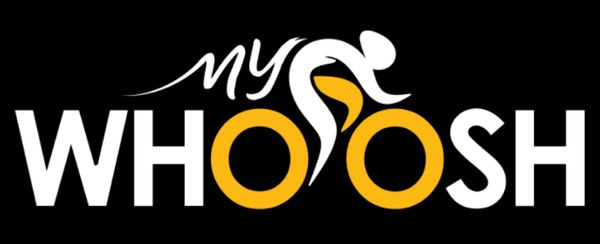Tadej Pogačar's training: What sessions does the three-time Tour de France champion do?
Calculating the world champion's training zones
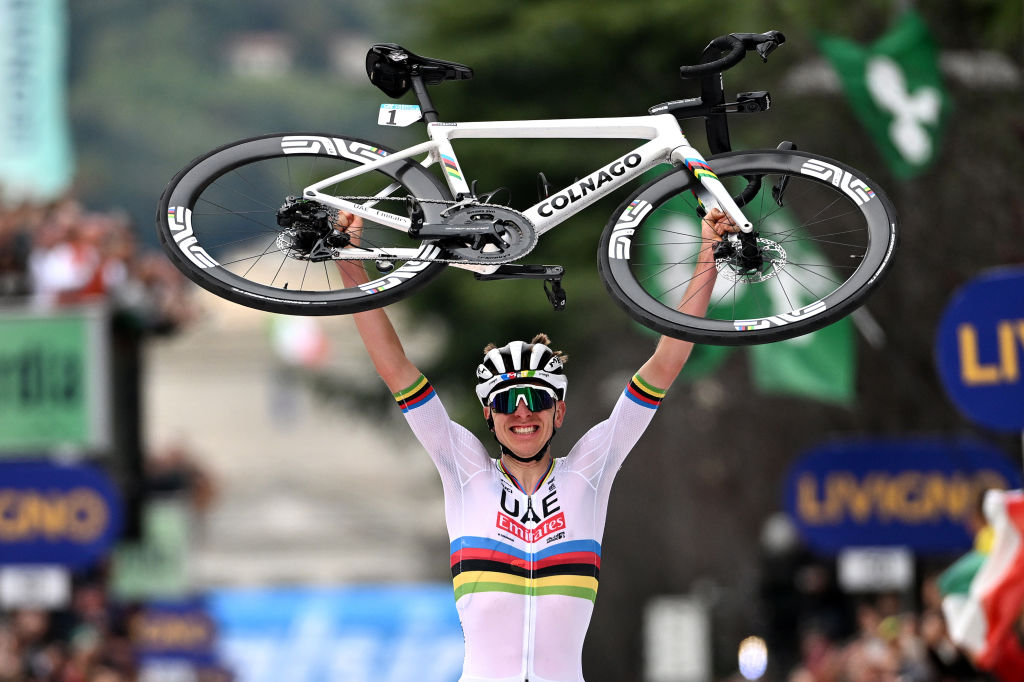
Any of us who have followed road cycling for the last few years will know the name Tadej Pogačar. Since turning professional in 2019, he has won four grand tours, plus a further three podiums, seven monuments, a road world championship title, and copious other wins and accolades in cycling.
In such a short space of time, he has been heralded as the next Eddy Merckx and even lauded as the new 'GOAT' (greatest of all time). Given he is able to leave his rivals for dust and, on a good day, be in a complete league of his own, one wonders what training Tadej Pogačar does to achieve this obscene level of performance.
In general, most WorldTour riders spend the majority of their training time doing long-duration low-intensity training. Essentially, big hours riding at a pretty easy pace. In recent years this has been lauded as the Zone Two training movement, but it’s been around for decades. Polarised training structures (where riders spend time at low intensity and high intensity, with minimal attention on the middle section) and Pyramidal training structures (where riders spend the majority of time at low intensity, and decreasing amounts of time at higher zones to create a pyramid of volume at each intensity) are commonly used for professional endurance athletes, with both relying on a huge amount of low-intensity training at a high volume, with a smaller amount of time spent at higher intensities. The benefits that these low-intensity workouts have are many, but the key factors are an increase in mitochondria and a greater number of capillaries in the muscles.
These two training adaptations set the foundation for aerobic sports performance, which in road cycling, makes up most of the conditions spent competing in save for sprints and short sharp efforts. Increased muscle capillarisation means greater oxygen delivery to the working muscles, while more mitochondria means greater capacity to use that oxygen and break down a greater amount of substrates. The net goal of this is an increased capacity to produce and maintain power on the bike.
However, if these riders just trained at ‘Zone Two’, they would be fantastic at maintaining a high power output for a very long time, but they wouldn’t have the same capacity to do blistering attacks or produce greater sprint power, both key elements when it comes to actually winning a race. This is where the high-intensity portions of the Polarised or Pyramidal training models come in. To find out exactly what kind of sessions Tadej Pogačar does, we spoke to MyWhoosh, the UAE Team Emirates team’s indoor training platform sponsor for which Pogačar is an ambassador. It has recently released a series of new workouts in its “Train like Tadej” lineup.
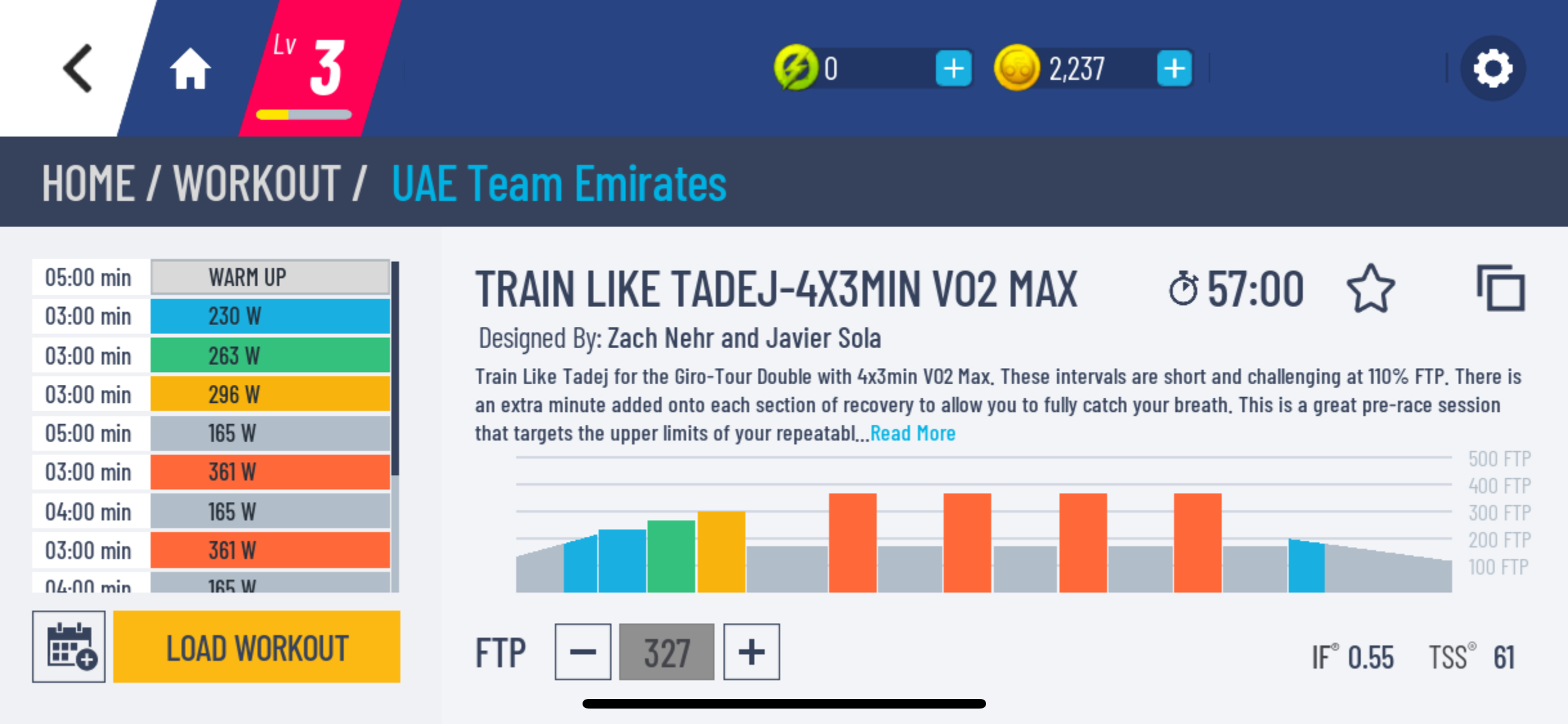
What workouts does Pogačar do?
MyWhoosh explained to Cyclingnews that these new “Train like Tadej” workouts are in fact some of the sessions that Pogačar himself includes as part of his training throughout different parts of the season and have been made with direct input from his coach Javier Sola and MyWhoosh head coach Zach Nehr. Some have been made as direct replicas, whereas others are slightly pared-down versions that should be more manageable for non-elite cyclists.
First off are two sessions called 'Criss-Cross Tempo' and 'Criss-Cross Tempo Long'. These are both sessions that start with a Threshold effort to build fatigue, then settle into a tempo effort, before repeating without rest.
Get The Leadout Newsletter
The latest race content, interviews, features, reviews and expert buying guides, direct to your inbox!
The key standout with attacks from Pogačar is that he can do them again and again, deep into a stage, several stages into a stage race, and these over-under style sessions force the body to recover at high intensities, as would be needed in a race situation. These workouts would likely be done after a longer endurance block to induce more fatigue beforehand.
Another of his workouts is the 4 x 3-minute VO2 Max session, which consists of four efforts at 110% of threshold, separated by four-minute rests. This is designed to really develop the upper end of repeatable VO2 Max power efforts.
In training, it’s a balance of making efforts fresh to generate the most power and elicit certain training adaptations, as well as performing them as best you can when fatigued to ensure minimal drop-off in power at the end of races. Riders need to be able to generate the maximum power possible while producing as close to that as possible when fatigued.
There are also some longer sessions listed, at closer to 90 minutes for indoor rides. These include 3 x 15 minutes at Tempo with long tempo blocks at 80% of threshold, as well as 6 x 15-second sprints every 10 minutes into a long endurance block.
Both of these sessions work more on lactate and fatigue metabolite clearance. We’ve all heard of lactate, or maybe lactic acid, but contrary to common belief, it’s not a problem for athletic performance but rather a fuel that can be used to generate more energy, or rather ATP (adenosine triphosphate). It has been given a bad rap for causing the burning sensation in the legs, whereas in reality, it doesn’t do that. Lactate clearance and lactate shuttling are important for endurance athletes as they improve the capacity to use lactate as a fuel source, in turn reducing other byproducts - namely hydrogen ions - which do cause fatigue.
The repeated sprints workout has a two-fold benefit. Firstly, improved sprint performance, which given that Pogačar was third in the group sprint at the 2024 Milan-San Remo, he clearly works hard on that. Doing maximal-effort sprints will enhance sprinting performance, while the recurring nature helps to improve the repeatability of them. During the course of a bike race, there are lots of surges and accelerations, the final sprint to the line is hardly ever the only sprint of the day.
The other benefit is fatigue management, as sprints produce a high amount of fatigue metabolites that limit muscular performance, namely inorganic phosphate. This comes from the phosphagen pathway, the breakdown of creatine phosphate to produce ATP very quickly for a very short time. Inorganic phosphate is a byproduct of this and can limit our capacity to produce force over time, in other words, we fatigue.
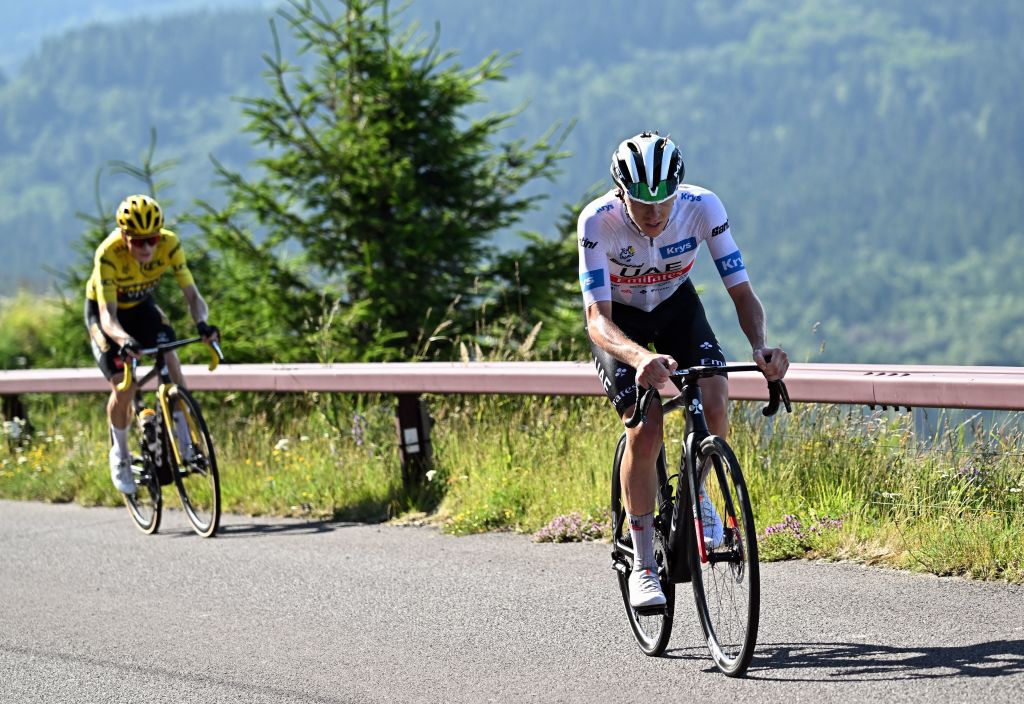
What power and HR are these sessions done at?
All of these sessions have been designed in MyWhoosh to use relative power rather than performed at Pogačar's power numbers. For example, with an FTP (Functional Threshold Power) setting of 300 watts, the 110% VO2max workouts will be done at 330 watts. This ensures riders can complete the sessions at the same relative intensity, rather than attempting to maintain the power output of Pogačar. But wouldn’t it be interesting to know what power he conducts these workouts at? The team wasn’t willing to divulge the exact numbers he trains at, but we can use a bit of data extrapolation to infer what his power zones might be based on some enlightening interviews and public data.
In a recent interview with Peter Attia, Pogačar mentioned that for his Zone Two rides, he rides at a power output of 320-340 watts and a heart rate of 140-150 beats per minute. These are frankly huge power numbers, and explain why on his endurance rides he can do 180km with 3000m elevation gain at 33-35kph.
But we can also use these numbers to get a rough idea of what his threshold power is. There are a few ways to display threshold power, but for these, we’ll define it as the power sustained for one hour, or approximately 95% of 20-minute power.
Generally, when riding at Zone Two power, what professional cyclists are really doing is working below the first lactate threshold (LT1). This is the turn-point where lactate starts to accumulate at an ever-increasing rate above the baseline, and where cyclists go from burning predominantly fats to using a higher ratio of carbohydrates and thus generating more fatigue metabolites.
In many highly trained professional cyclists, this turn-point occurs at around 80% of threshold power. Let’s say that the 340w boundary is 80% of Pogačar's FTP, or that it’s a little below (75%) so as to avoid crossing that boundary, then that gives an FTP of around 425-453w.
That sounds like an astronomically high FTP for a General Classification rider who is roughly 65kg, but it tracks with some power figures released by Velon for Pogačar's in-race attacks.
On stage 15 of the 2024 Giro d'Italia, Pogačar attacked with 15km to go for 5min at a reported 450w (7 watts per kilogram). There have been some calculations that he did 7w/kg for 20min at the 2024 TdF, again in that 450w region. Both of these are in line with our FTP calculation above, but both were well into a stage and the stage race itself. Add altitude to the fatigue elements and it’s incredibly impressive.
Looking back at those MyWhoosh sessions, we can take a good guess at the power being maintained for those efforts:
The 4 x 3-minute VO2Max (110%) intervals, for example, are likely being completed 467-498w, while the Tempo blocks are comfortably at around 340-360w.
Fortunately, when attempting these sessions, we don’t have to do these power outputs, we can instead do an effort relative to our own abilities. It does, however, give you a great insight into the type of efforts and effort level required to train like a multiple grand tour and world title winner.
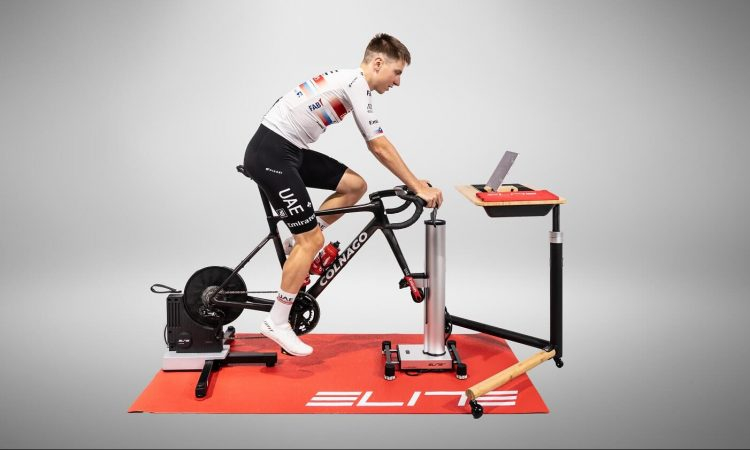
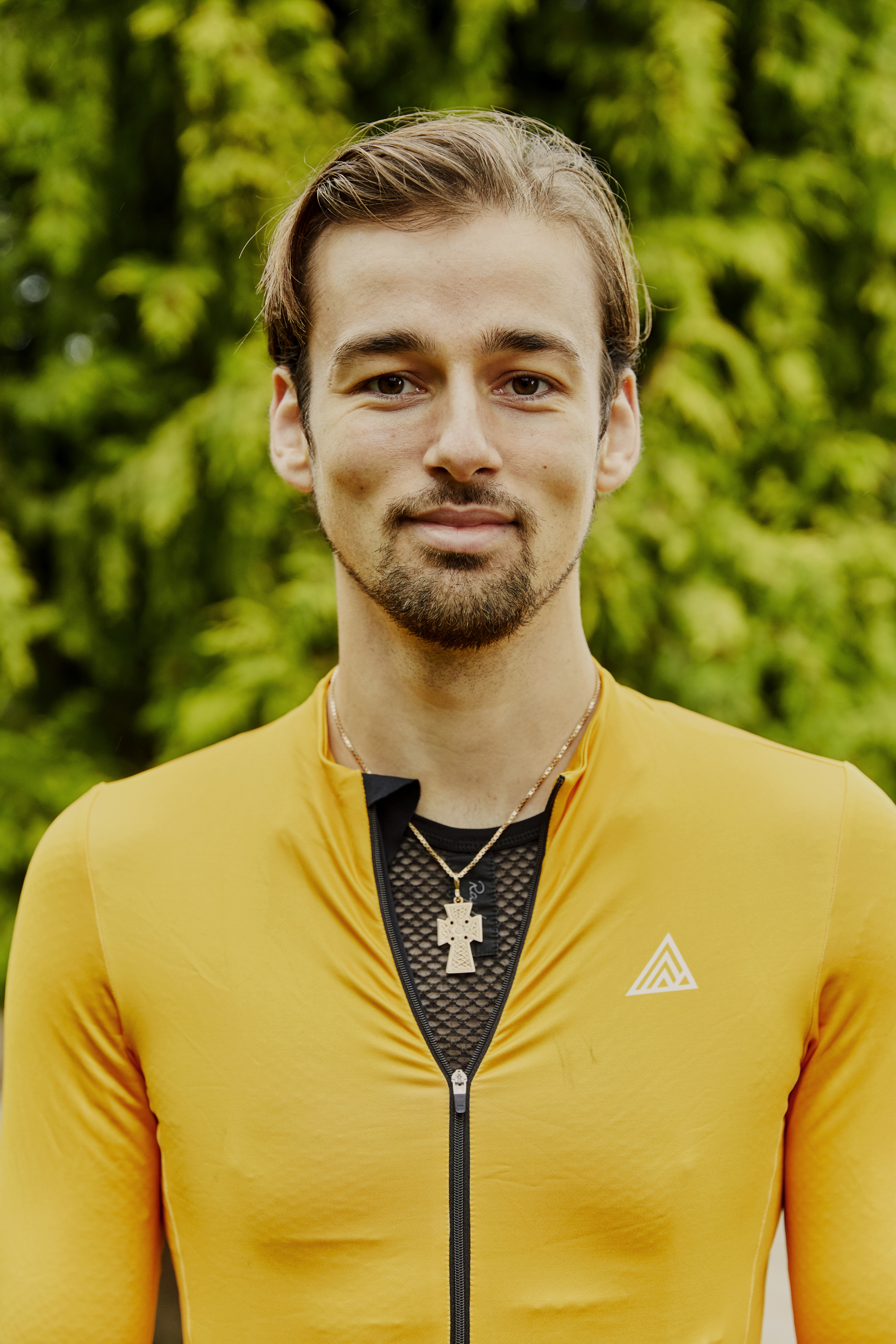
Freelance cycling journalist Andy Turner is a fully qualified sports scientist, cycling coach at ATP Performance, and aerodynamics consultant at Venturi Dynamics. He also spent 3 years racing as a UCI Continental professional and held a British Cycling Elite Race Licence for 7 years. He now enjoys writing fitness and tech related articles, and putting cycling products through their paces for reviews. Predominantly road focussed, he is slowly venturing into the world of gravel too, as many ‘retired’ UCI riders do.
When it comes to cycling equipment, he looks for functionality, a little bit of bling, and ideally aero gains. Style and tradition are secondary, performance is key.
He has raced the Tour of Britain and Volta a Portugal, but nowadays spends his time on the other side of races in the convoy as a DS, coaching riders to race wins themselves, and limiting his riding to Strava hunting, big adventures, and café rides.
